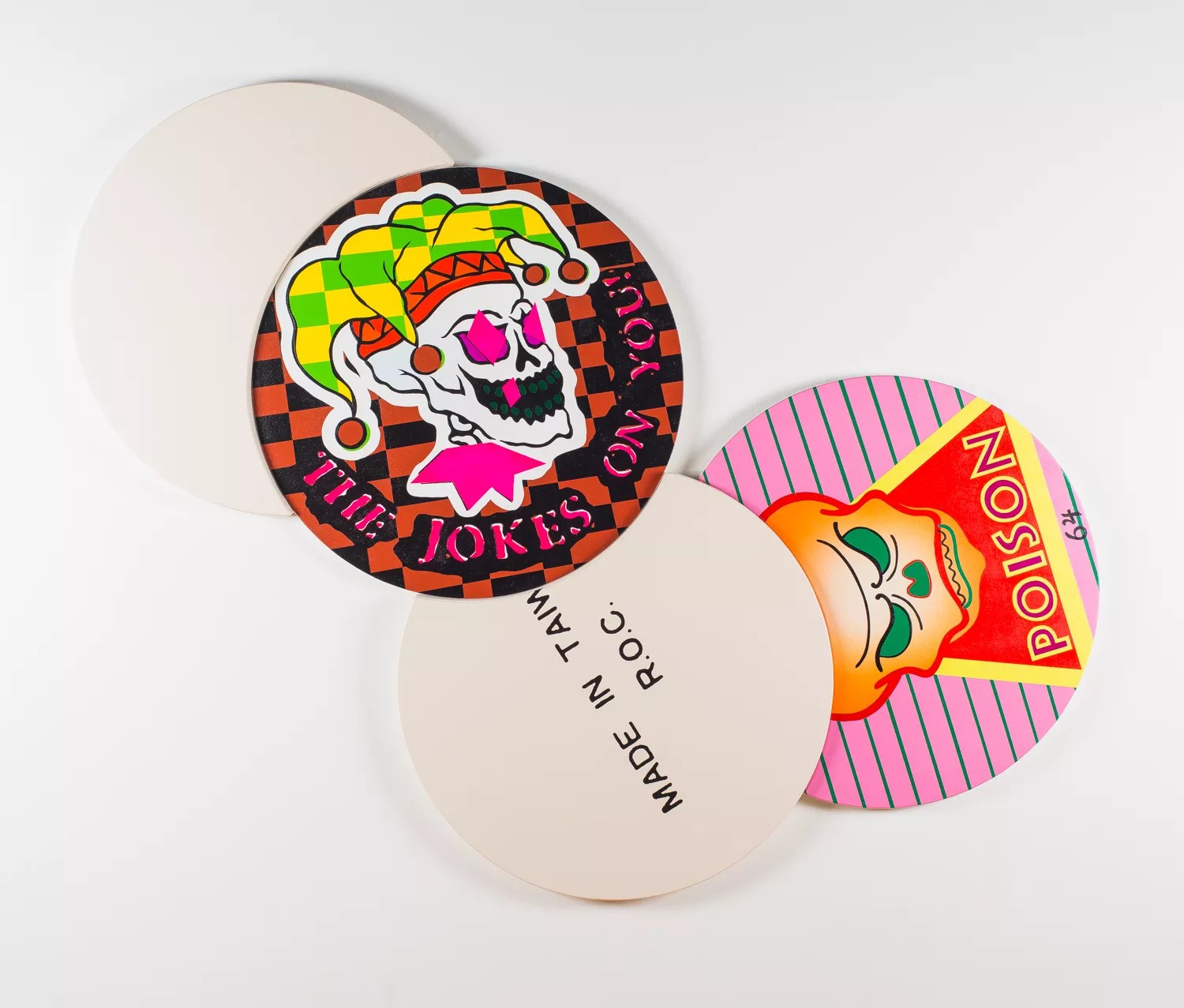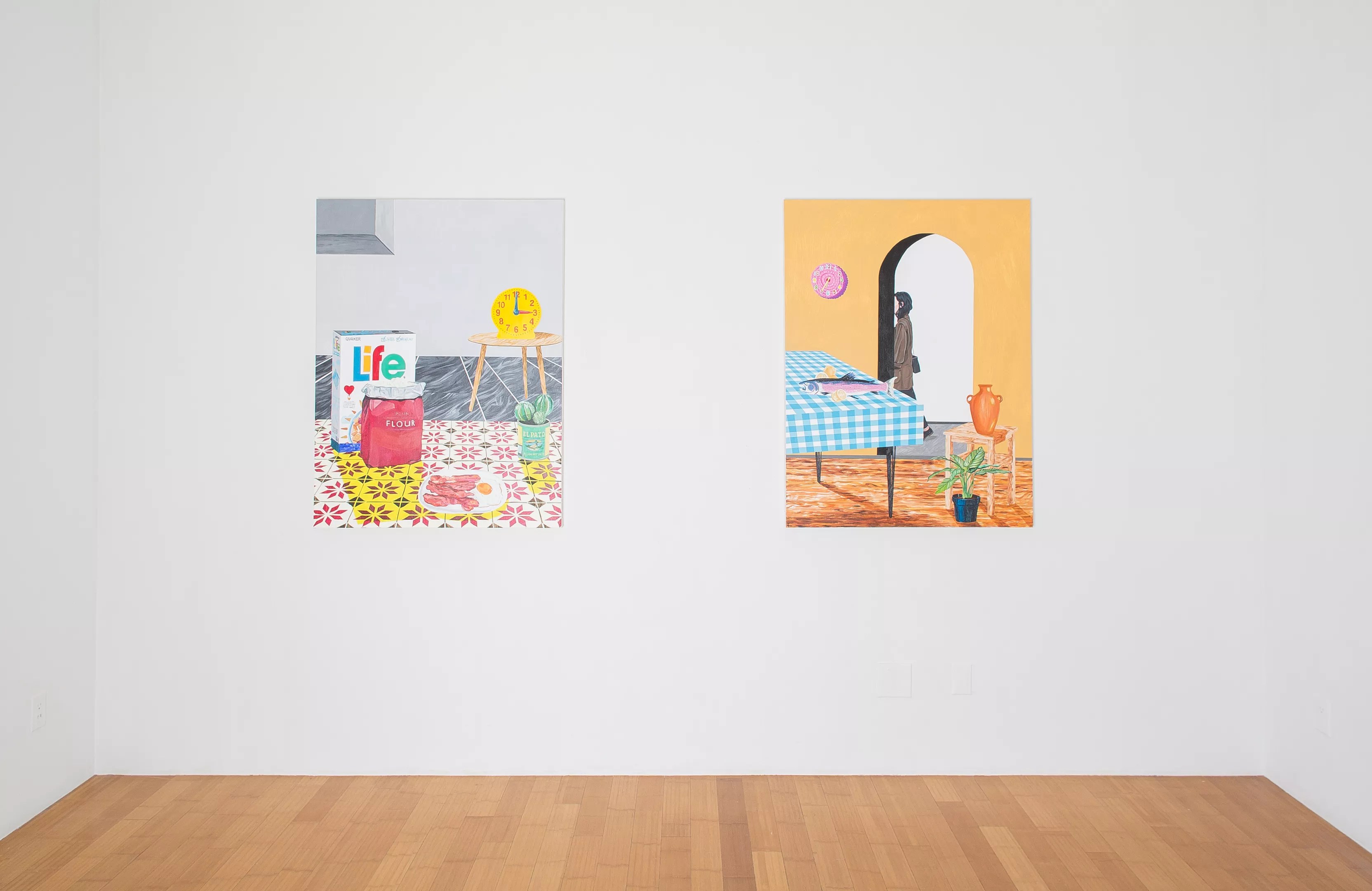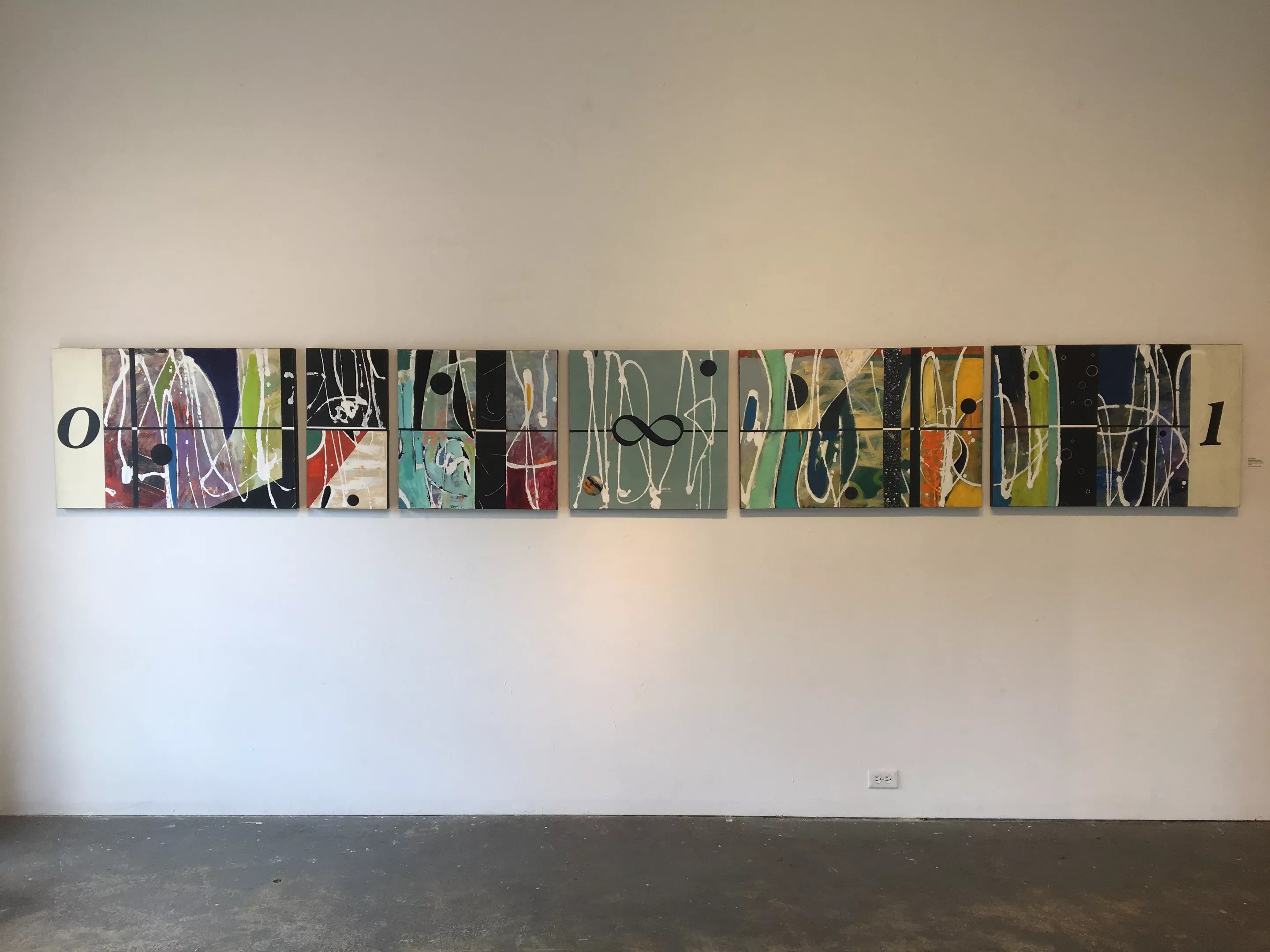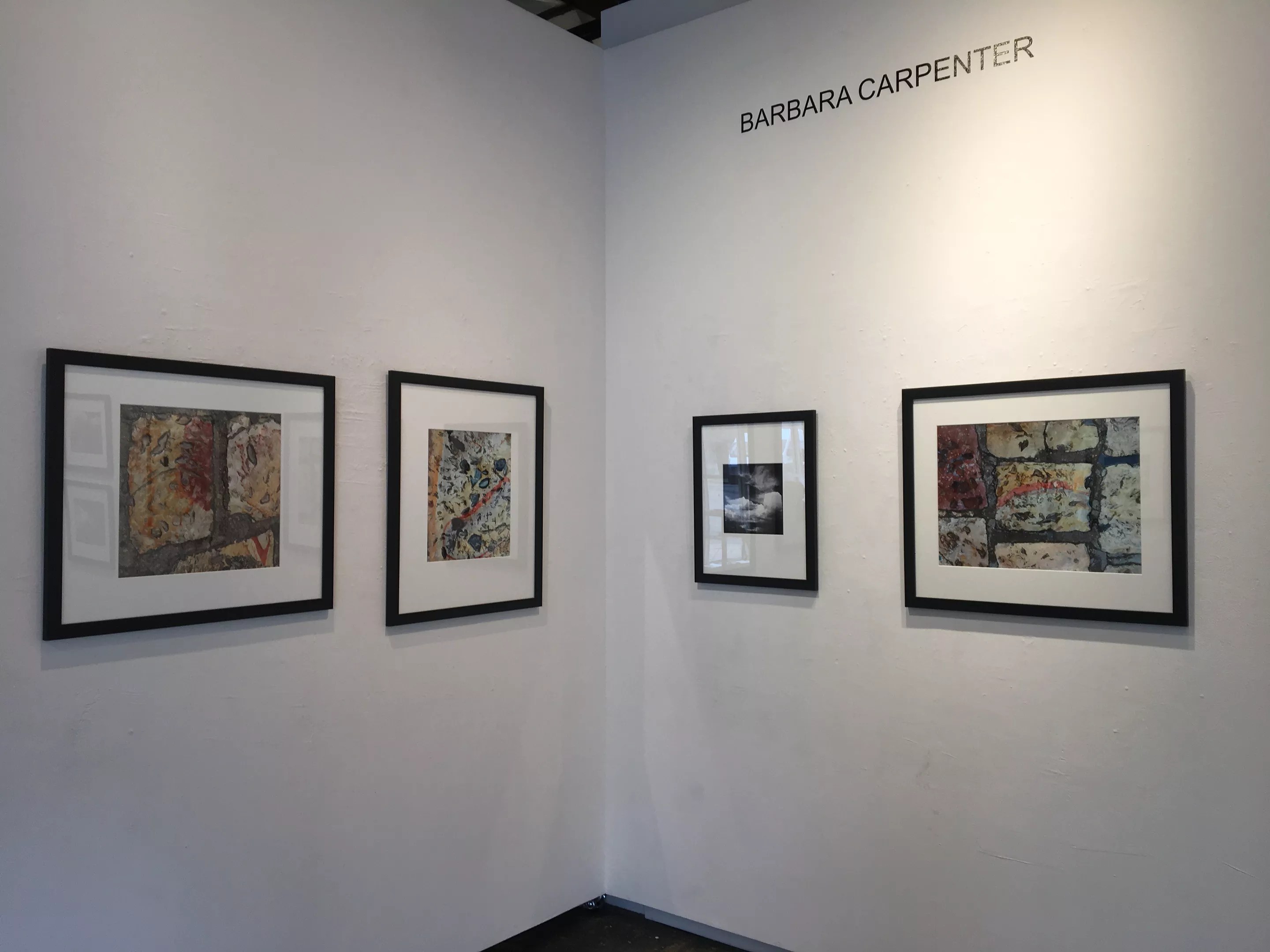
Photo by Matthew Pevear courtesy of David B. Smith Gallery

Audio By Carbonatix
David B. Smith Gallery is hosting an impressive solo dedicated to Zach Reini, one of the city’s most important conceptual artists. The pieces in Zach Reini: Not Much Will Change When I’m Gone struck me as quite different from the work on which Reini has built his reputation, like a partly cut out profile of Mickey Mouse and an abstraction based on old tattoos. But then again, the new paintings do follow an idea path he’s gone down before – using the deconstruction of art to comment on society.
Reini’s source of inspiration for many of these precisely done paintings is the imagery and phrases found on discs used to play pogs, a wildly popular game in the 1990s, especially among children. Some kids didn’t play the game at all, but simply collected the discs and traded them. The imagery of the pogs sometimes has an affiliation with manga style, as well with comic books, horror fantasy characters, playing cards, and on and on. I remember seeing them for sale in 7-Eleven and having no idea what they were. But Reini did: Born in 1990, he would have been a child during the game’s heyday, and his incorporation of pogs here seems more autobiographical than usual.
The pog paintings are done on circular canvases, sometimes stacked in clusters, just as the actual pog discs were. The multi-panel “The Jokes on You!,” in spray enamel, acrylic and latex on canvas, is an eye-popping example. Reini has arranged four circular panels in a wall-mounted pile; the uppermost panel, which reveals its full circular shape (unlike the ones behind it), bears the motto “The Jokes on You!” running below an image of a smiling skull made up to look like a jester. Falling away behind are the three partly concealed circles, one with a skull even more menacing than the jester, with acid-green eyes and the word “Poison”; the other two represent the back of the pogs, giving the skulls some extra visual space. Reini takes the reverse tack in “Tango Down,” in which the backside of a pog, reading “Made in Taiwan, R. O. C.,” is the uppermost element, with another jester-skull slotted in partly behind. Beyond the subject matter, the inclusion of type and the rendering of the subjects, with crisp margins and lurid colors, give these paintings a neo-pop vibe.

Zach Reini’s “The Jokes on You!”
Photo by Matthew Pevear courtesy of David B. Smith Gallery
We’re thankful for you. Are you thankful for us?
We feel thankful for our staff and for the privilege of fulfilling our mission to be an unparalleled source of information and insight in Denver. We’re aiming to raise $50,000 by December 31, so we can continue covering what matters most to this community.
Help us continue giving back to Denver.
In addition to pog-prompted paintings, there’s a suite of odd installations that culminates in an assortment of found objects, including actual pogs, pog cases and a black light leaning against the wall, with an inverted drawing above it and off to one side. This accumulation is hidden behind “Ghost in the Shell (Entombment of a Machine),” a digitally woven tapestry with the image of an Asian magazine cover stretched over a wooden frame, set out at an angle from the wall. The tapestry includes a representation of an eroticized robotic woman surrounded by Japanese characters and a smattering of English words. The threads used to create the imagery result in a faded palette, not unlike an actual cover that’s been cheaply printed. “Breakfast” (left) and “June 7,” both by Sierra Montoya Barela. Photo by Matthew Pevear courtesy of David B. Smth Gallery
Works by Sierra Montoya Barela have been installed in the small projects space in back at the gallery. Her paintings also delve into traditional representation and have a pop-y quality, but they’re more expressively detailed, lacking the expected photographic crispness. Most are renderings of unoccupied rooms (“June 7” is the exception, with the glimpse of a woman on her way out of the place), with a compressed or otherwise altered sense of three-dimensional space that gives them a stilted and artificial quality; they are more like lyrical illustrations in a graphic novel, with the domestic scenes seeming to be a part of some unknown narrative. (A large selection of Barela’s paintings are also now on view at the Museo de las Americas in Espacio Liminal/Liminal Space.)
More straightforward narratives underlie the paintings in Sue Simon: Numbers in the west space at Spark Gallery. Simon has been creating abstractions based on scientific and mathematical equations expressing certain elements and processes in the universe for decades. For these recent paintings, though, she has stepped away slightly from that well-established formula (forgive the pun) and is looking at numbers not as a component to be used to solve math problems, but as their own autonomous vocabulary of shapes and ideas.

“Uncountable Infinity,” from Sue Simon: Numbers.
Robert Delaney
The tone of the show is set by a single monumental work, “Uncountable Infinity,” that takes the form of an exaggerated horizontal, comprising a number of panels of differing widths and the same height, so that they can be lined up. The panels are covered in all-over abstracts with atmospheric grounds and linear elements. Running the length of them is a graphically bold horizontal line that changes from black to white depending on the colors of what’s behind it. At one end is the numeral zero and at the other the number one, with the infinity symbol in the middle. The piece is meant to represent the idea that there are an infinite set of fractional numbers that exist between zero and one, and it really works. “Uncountable Infinity,” from Sue Simon: Numbers. Robert Delaney
Simon told me that she had tortured this painting for nearly three years, changing the lineup of the panels, repainting parts and even completely replacing some – as she did just before the show, changing out the center panel, the one with the infinity symbol. These difficulties are invisible in the finished painting, however, and the whole thing comes together perfectly.

Barbara Carpenter’s iPhone photos of pavements and clouds.
Robert Delaney
In the adjacent east gallery is Barbara Carpenter: Over/Under, with photos of clouds (the over part) and pavement (the under), which have been taken with an iPhone and presented in digital prints. While the cloud photos don’t look like signature Carpenters, the pavement pictures do. Traditionally, Carpenter has created “found” abstracts by photographing something, such as scrap metal in a junk yard, and closely cropping her view to remove it from its context and thus make it into a non-objective composition. The cloud pictures, though technically “found” abstracts, are clearly depictions of the actual sky. But the pavement photos lose the recognizability essential to the idea of a found abstract, instead melting into roughly geometric constructions in mottled earthy tones. These advance Carpenter’s previously expressed ideas, while the clouds seem to indicate a whole new direction.
While the two artists at Smith are younger and the Spark soloists are veterans, they all have something in common: They create work based not solely on external reality, but on their individual ideas about the nature of art.
Zach Reini and Sierra Montoya Barela, through June 15 at David B. Smith Gallery, 1543 A Wazee Street, 303-893-4234, davidbsmithgallery.com.
Sue Simon and Barbara Carpenter, through June 9 at Spark Gallery, 900 Santa Fe Drive, 720-889-2200,
sparkgallery.com.